The Ennead or Great Ennead was a group of nine deities in Egyptian mythology worshiped at Heliopolis: the sun god Atum; his children Shu and Tefnut; their children Geb and Nut; and their children Osiris, Isis, Seth, and Nephthys. The Ennead sometimes includes the son of Osiris and Isis, Horus.
The Great Ennead was only one of several such groupings of nine deities in ancient Egypt. Its claims to preeminence by its Heliopolitan priests were not respected throughout Egypt.[2] As close as Memphis (also within modern Cairo), the priests of Ptah celebrated him as superior to the Nine. In addition to Memphis having its own creation myth, the Ogdoad/Hermopolitan centered around physical creation and eight primordial gods was another creation story that existed at the same time.
- Wikipedia
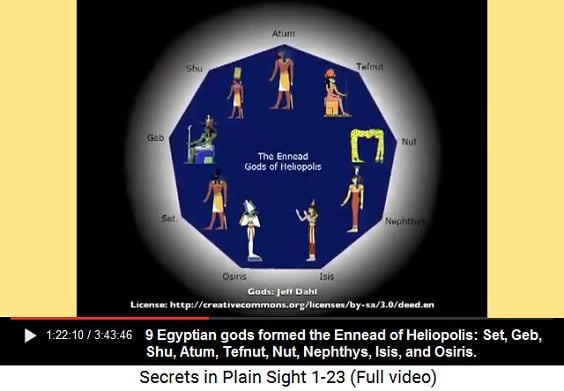
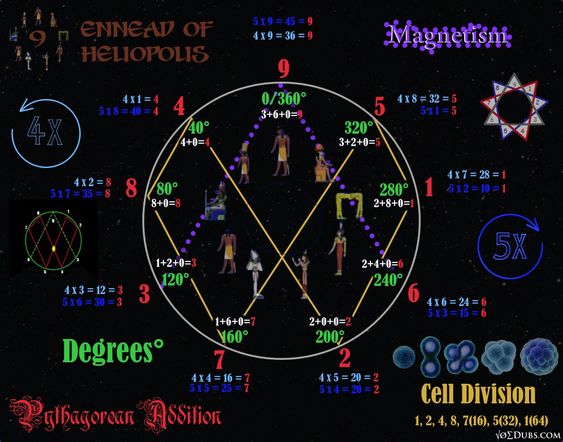
Enneagram is a compound word derived from the Greek neoclassical stems for "nine" (ennea) and something "written" or "drawn" (gramma).
-Wikipedia

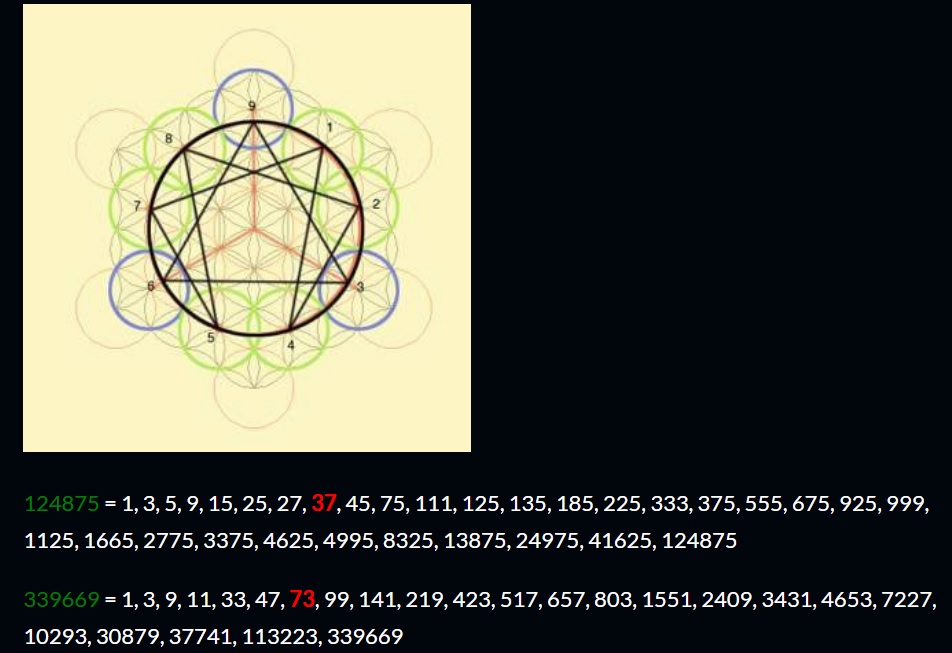
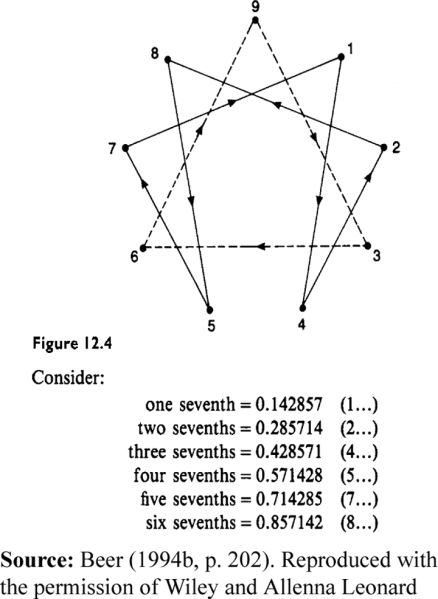
This is Marko Rodin's torus with the numbers 1,2,4,8,7, and 5 in one line and 3, 3, 9, 6, 6, 9 in the other.

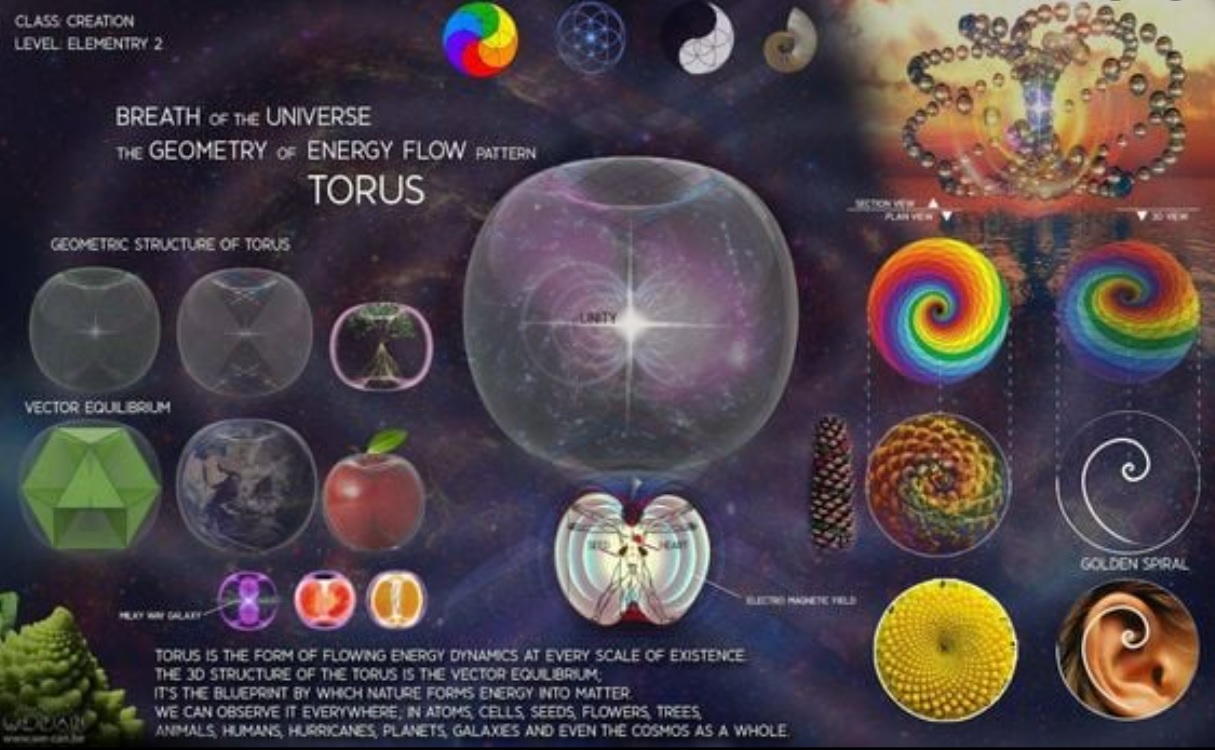


The Son of Man by René Magritte (1964, Oil on canvas, Surrealism)

The Grand Torus Energy Experiment
Randall Carlson explains how ancient people across the globe were calculating "sacred hidden numbers" that reduce to nine.
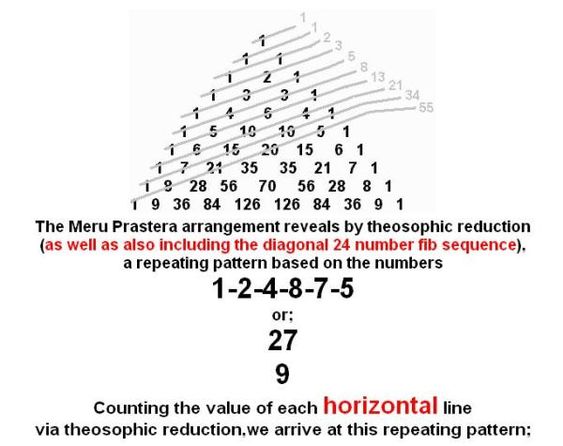
In Hinduism
Shaktism (Shakta philosophy)
[«previous (M) next»] — Meruprastara in Shaktism glossary
Source: Google Books: Manthanabhairavatantram
Meruprastāra (मेरुप्रस्तार)(translates as "spinal cord") is a three-dimensional representation of Śrīcakra.—Meruprastāra is the core of the goddess’s maṇḍala (from here emerges the goddess, and with her, the Krama).—[...] Pīṭha (“sacred seat”) is a general term for a place where a goddess or Yoginī resides. Internalized, these places may be represented as the ‘location’ of the fifty letters within the goddess’s triangular Yoni. When viewed in this form the Yoni is called the Meruprastāra.
Source: Manblunder: Śrī Cakra Navāvaraṇa PūjāM
Meruprastāra (मेरुप्रस्तार) refers to one of the two types of Śrī-Cakra.— There are two types of Śrī Cakra. One is bhūprastāra and another is meruprastāra. Bhūprastāra refers to normal flat Śrī Cakra, whose surface is flat. Whether it is Śrī Cakra or Meru, it should always be in square shape. Meruprastāra, which is vertical in nature, is divided into three types. The first three āvaraṇas are sṛṣṭi-karma (creation); The next three āvaraṇas are sthiti-krama (sustenance) and the last three āvaraṇas are saṃhāra (dissolution) kramas. The height of the first three āvaraṇas (bhūpurā and eight petal lotus and 16 petal lotus) is more than the other two is one type. The height of fourth, fifth and sixth āvaraṇas is more than first three and last three āvaraṇas is the second type. All āvaraṇas having the equal height is the third type.
Shaktism book covercontext information
Shakta (शाक्त, śākta) or Shaktism (śāktism) represents a tradition of Hinduism where the Goddess (Devi) is revered and worshipped. Shakta literature includes a range of scriptures, including various Agamas and Tantras, although its roots may be traced back to the Vedas.
Bhutanese thanka of Mt. Meru and the Buddhist Universe on Wikipedia



No comments:
Post a Comment
Note: Only a member of this blog may post a comment.